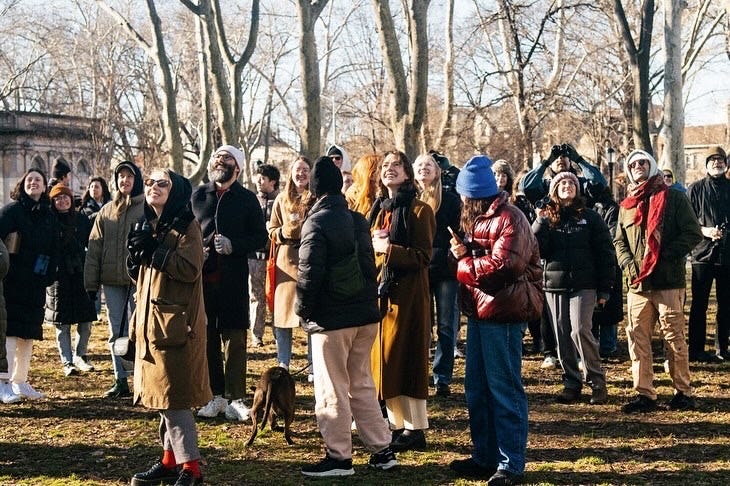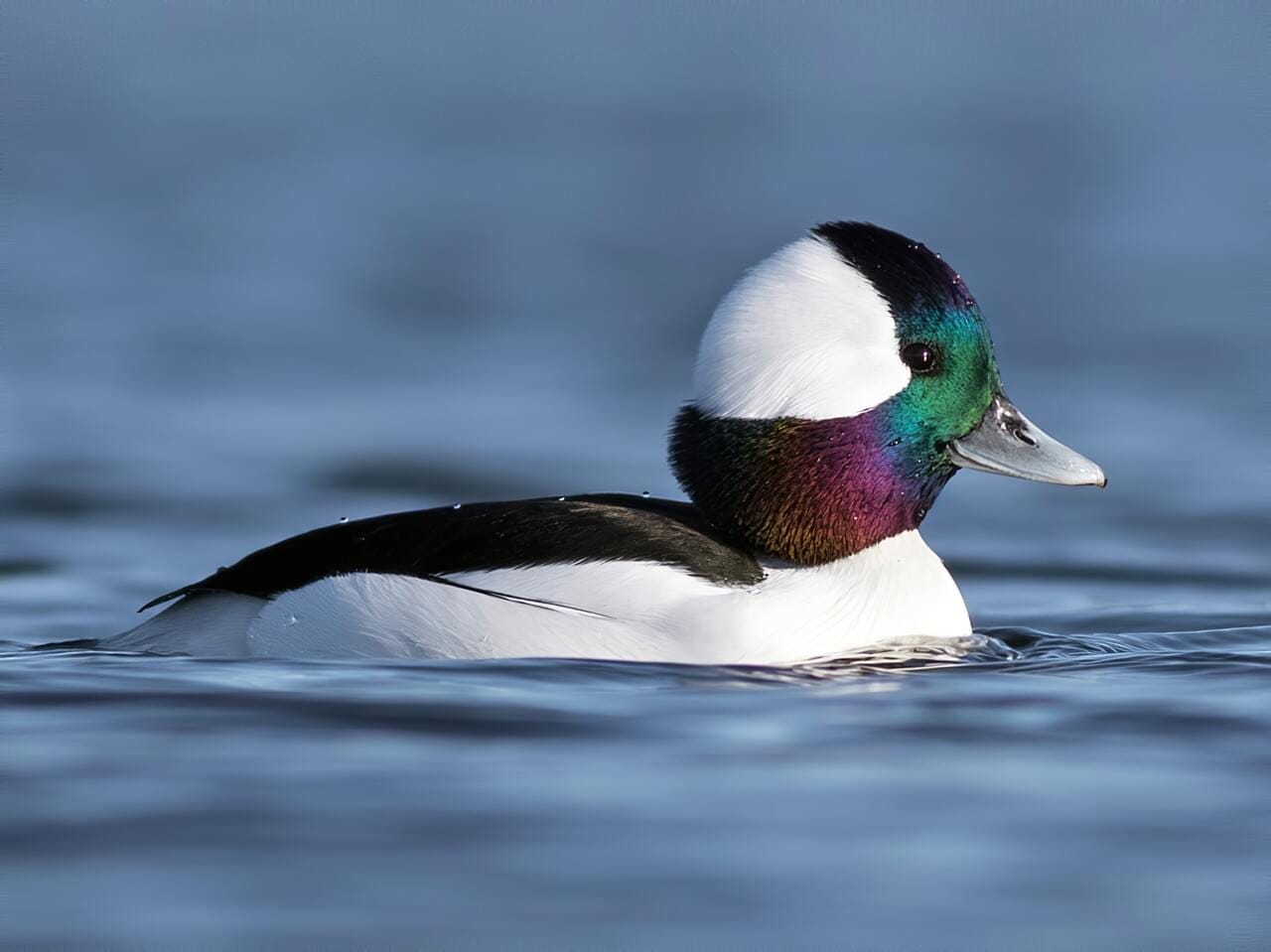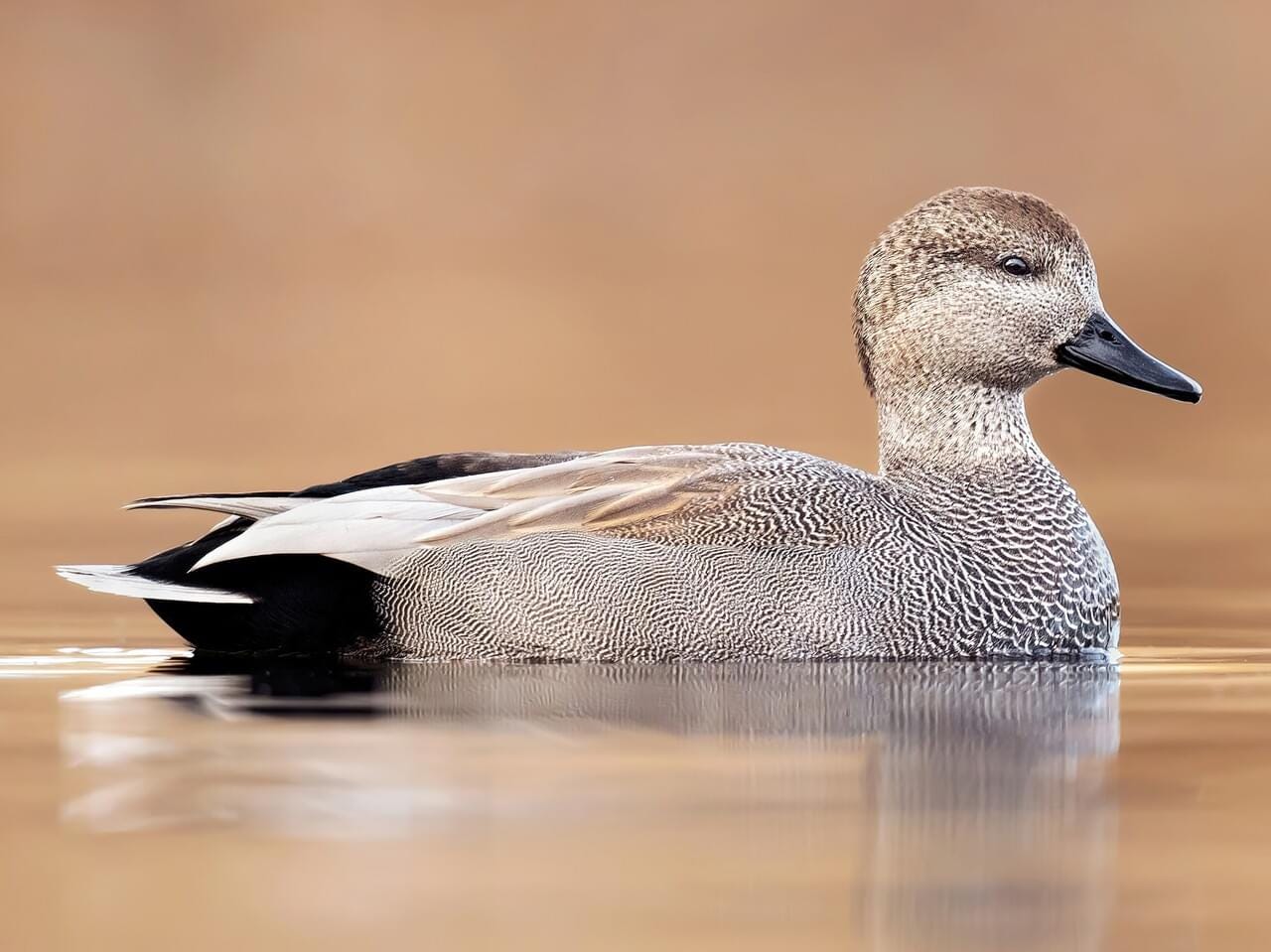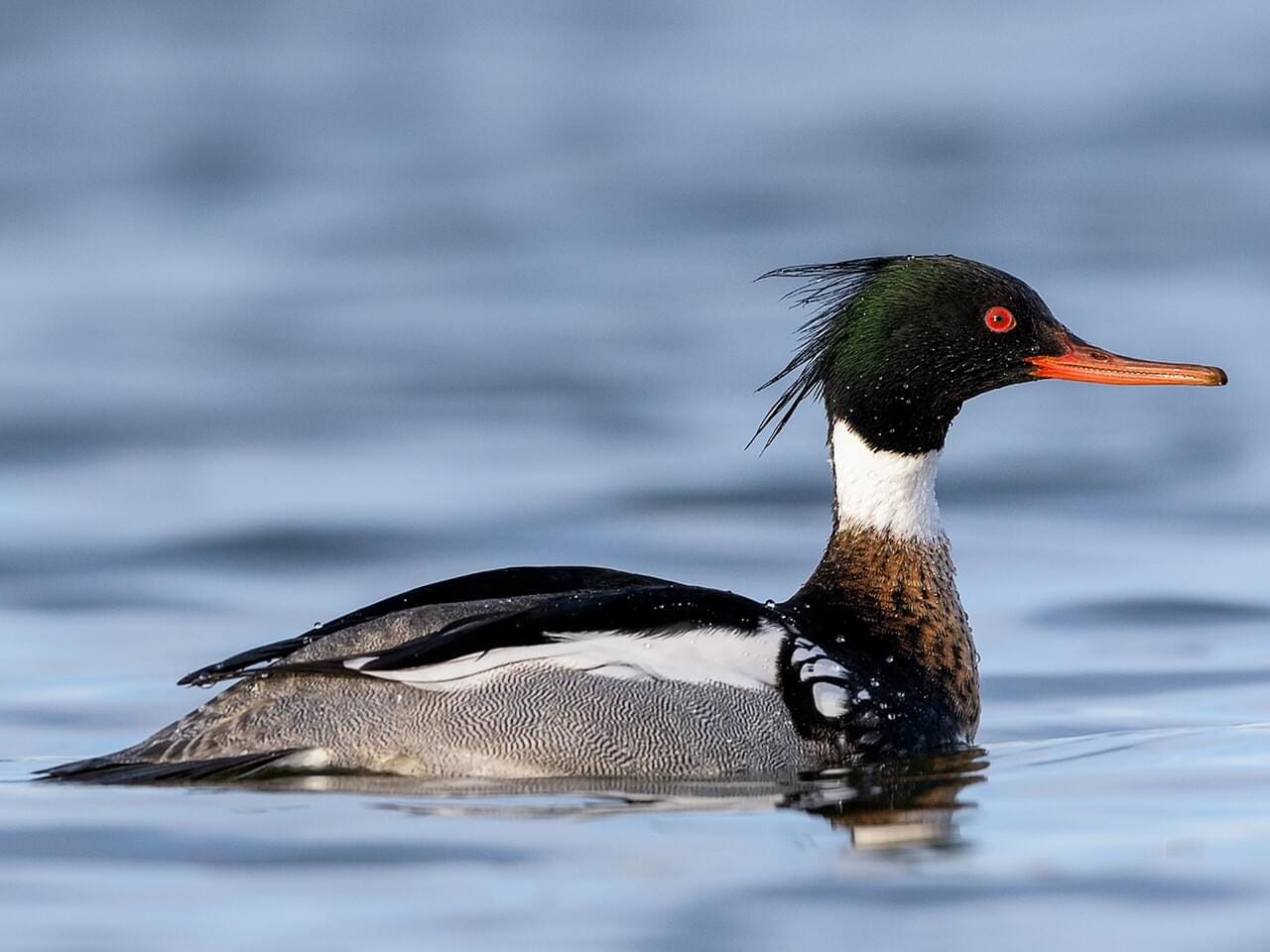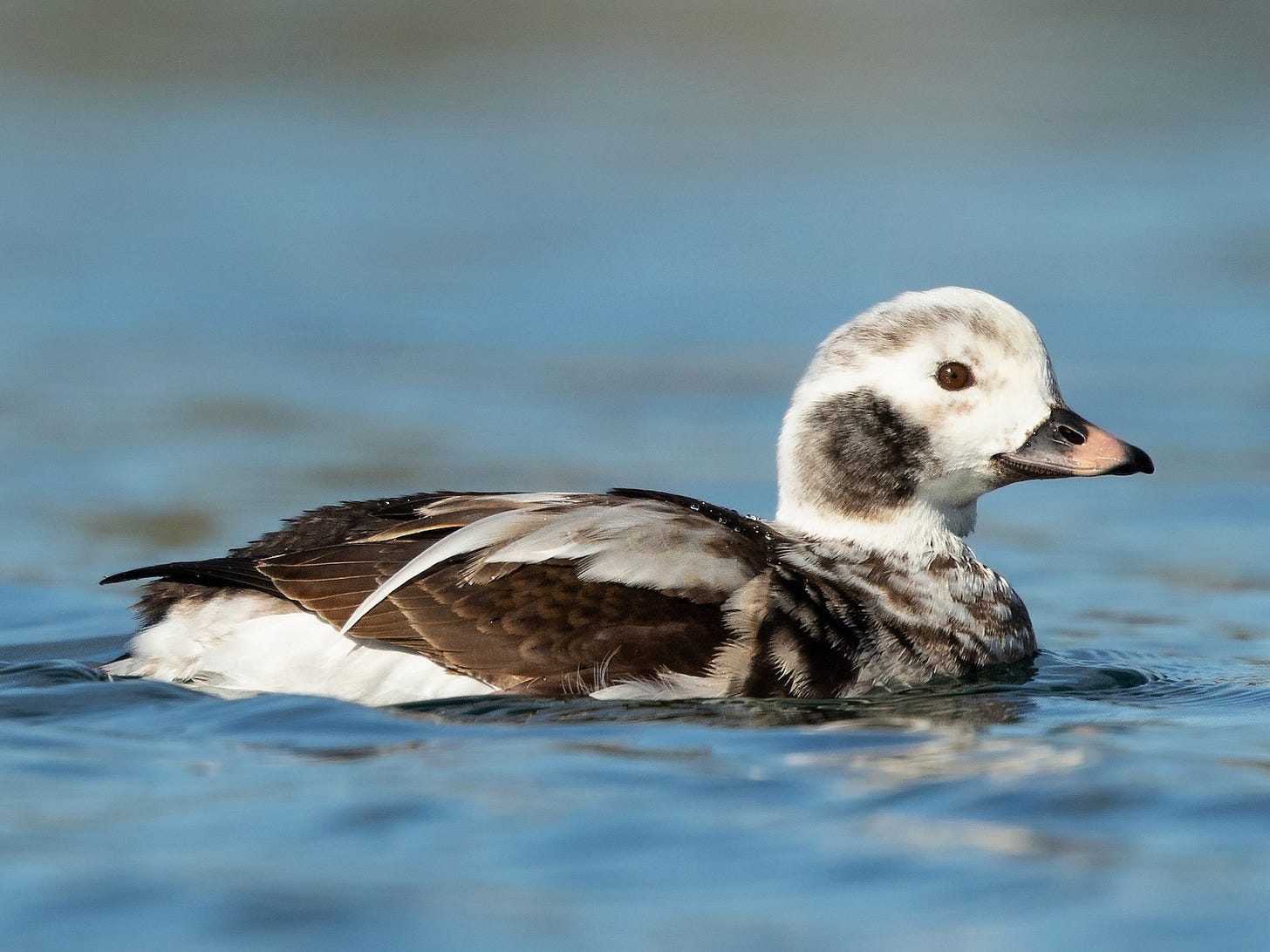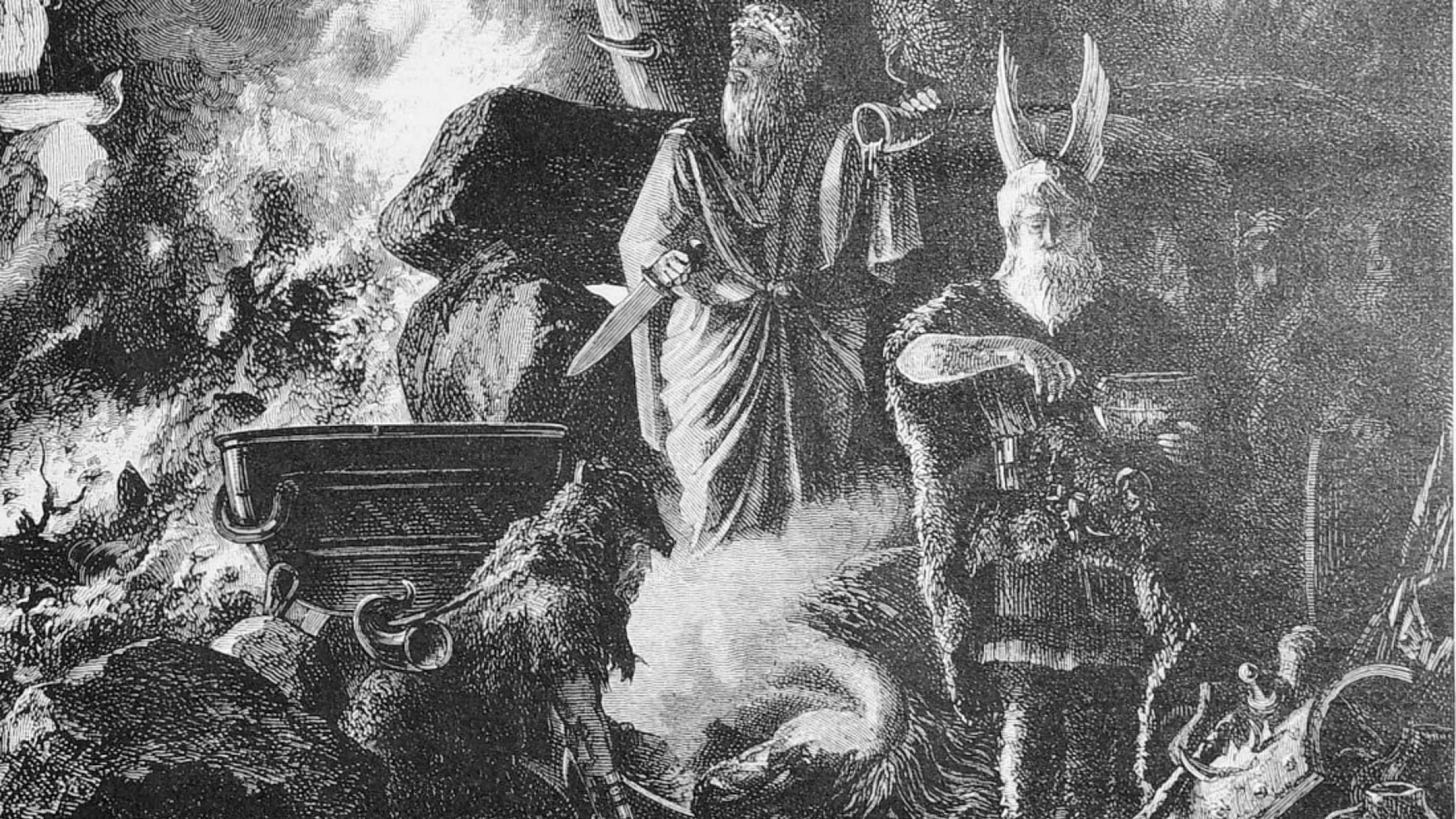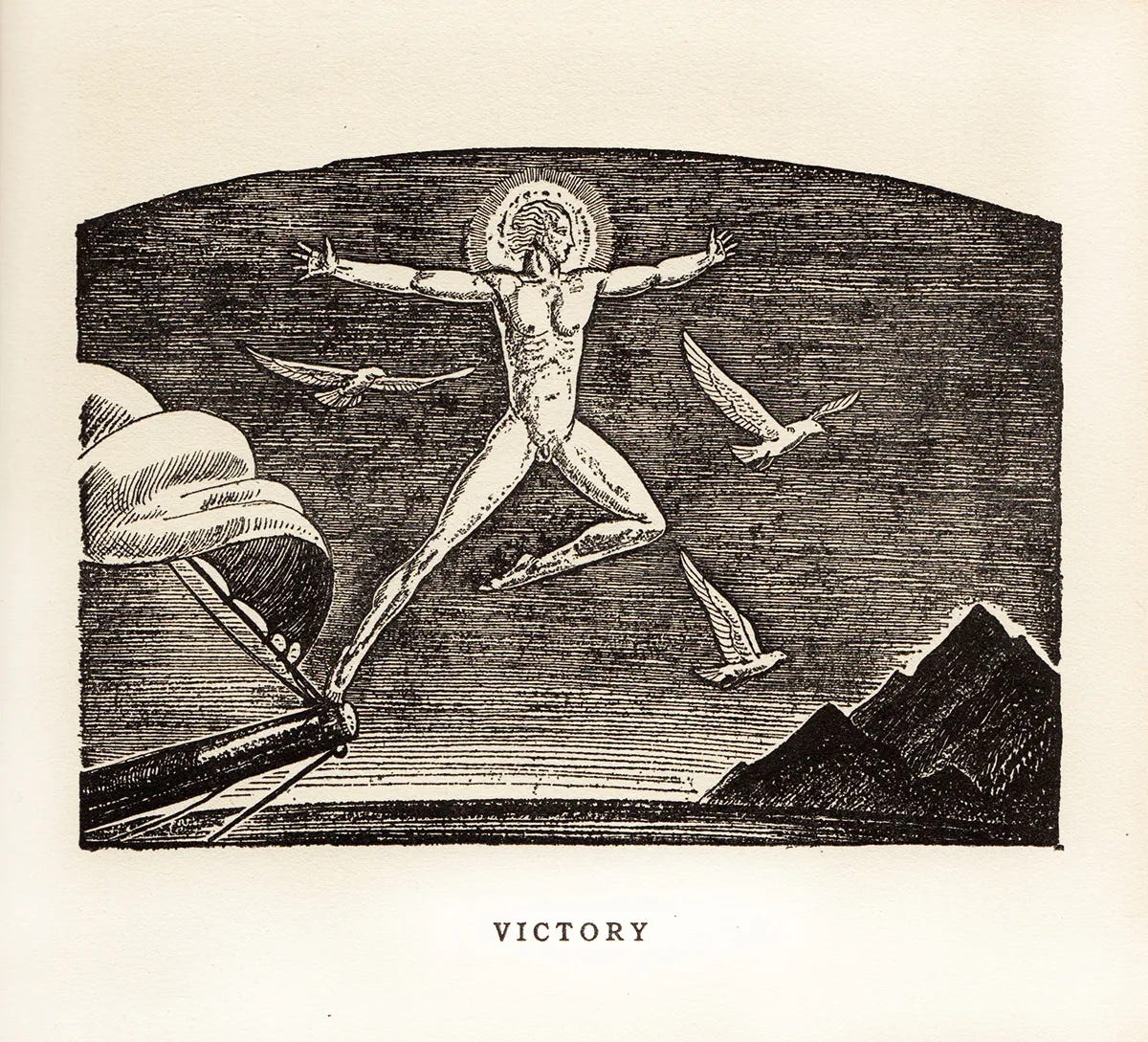FEBRUARY '24
In which we plug a party, go zen life aquatic, then blast both of your crazy aunt's c-word religions. (That's christianity and consumerism, chill out.)
A special mid-month hi-di-ho from McGolrick Bird Club’s Newsletter Dept. Mid-month because we’re moving to a beginning of month publishing cadence. (So our next issue will alight on your email in early March. ✍️😅)
If you don’t already subscribe, do so below. Substack has a default paid subs flow—just hit “No pledge” as this is a labor of love…
🚨WEEOOO WEEOOO!🚨 Illegal word choice. Pull over. Butt cheeks!
It being so-called Valentine’s season, let’s take special care with the L-word. (Analysis below.) Until then, let’s privilege biophilia (bio·phil·iaˌ bī-ō-ˈfi-lē-əˌ shoutout Björk): to be drawn towards nature, to feel an affinity for it, a craving.
UPDATES AND ANNOUNCEMENTS
We’re hosting a party—theme: Northern Flicker—on February 24th, at Buttery Bar. Sip signature cocktails, bow to 2023’s BOTY (Bird of the Year), nab a Best Dressed Award*, and—time permitting—worship Mother Earth via pagan ritual, where we’ll pray for the species’s repeated reproductive success in McGolrick.
*Dress like the Northern Flicker! Colors will suffice. Do it or else eat bugs.
Parsley and Brittany will guide tomorrow’s walk! Asked to comment, Michael, who’s out of town, begged: “Please don’t like them more than me, even though they’re better whiteboard artists and all-around badasses.”
On Sunday, March 3, we’ll field trip to Brooklyn Bridge Park. More details to come. Tentatively: plan to meet near the DUMBO ferry landing at 9am.
LATE JAN/EARLY FEB RECAP
Since our last issue we:
Noticed 22 bird species in McGolrick Park (see our January favs here and everything else in the Sightings column here). Highlights include:
a Peregrine Falcon, who continues to hunt from St. Stan’s
Downy Woodpeckers drumming, for the first time in months. Drilling holes? Naw. This behavior signals aspirations for territory.
Red-bellied Woodpeckers, making their churrr call—alongside the more frequently heard sneaker-in-gym cherchercher.
Visited Transmitter Park. Learn about its winter duckies below.
Hosted 3 free, guided, punk and metal Saturday sessions
readings: John O'Donohue, Mary Oliver, Henry Miller
averaged 40 attendees—including a not-into-numbers-but-dayum record 73 hotties on February 10th—despite cheeky weather
WINTER BIRDING PART … XVII?
Devotees will recall that cheeky weathered months mean relatively low bird counts in urban parks. And that’s why we lov… 🚨 …um… biophilia winter.
Why? Because winter birding is:
Practice. A Daniel-san wax-on/off proficiency in the common begets mastery. Notice the shapes, movements, behaviors, and varying calls of the easy to encounter House Sparrow, American Robin, European Starling, Mourning Dove, and Pigeon. Knowing them well will help you better notice everything else.
Birds of prey. Leafless trees = fewer obstructed views of McGolrick’s (and much of the US’s) four common bird of prey species: Red-tailed Hawks, Cooper’s Hawks, American Kestrels, and Peregrine Falcons.
Ducks. Cue the Bird and Moon comic. Ducks of the arctic visit US waterways—including Greenpoint’s—during winter. Let’s say hi.
DUCK, DUCK, DUCK, MERGANSER
You already know Mallards and Canada Geese. (You really do. Check links.)
Now take in the below birds—they’re relatively common to US/Greenpoint’s coastlines. Try to commit them to memory*, then head to your nearest waterway and impress startled passersby by screaming out species names.
Bufflehead (learn more here)
Often in pairs (female here) and groups, Buffles’ black and white make them easy to spot. NB: The iridescence usually looks black in-person.
Gadwall (more here)
Drab from afar, so be an ass person and look for that jet black keister. Incredible gray patterns up-close. If it’s green-browed it’s a Wigeon.
Red-breasted Merganser (more here)
It’s giving Psycho Weasel. Memorize that long-flat-bill over skinny-neck profile to identify mergansers: hooded and common are around too.
Long-tailed Duck (more here)
An East River rarity seen fishing near Greenpoint’s ferry landing. Story here. This duck used to be called
oldsquawfor its call. Not great.
Induc(k)tive Learning
*Yeah so these photos and descriptions and links are super cool, we know 💁♀️. But the very true truth is that, when you’re new to birding, it is MUCH HARDER to go from image —> identification IRL.
What’s MUCH EASIER is to go from IRL experience —> memorized ID. The reason(s) here, whether psychological, evolutionary, cosmic, or all of the above, is someone else’s hypothesis. There’s just something about the muscle memory of actual experience that rules. Go outside and just start noticing, bird by bird, right now!
iNaturalist
If identification feels hard, download the free iNaturalist app. It surfaces species’ names based on your iPhone photos. Usage instructions at caption’s end, here.
BIOPHILIA, THE ONLY LOVE YOU NEED
‘Tis the season of (St.) Valentine. A time to honor love and its labors, right? And yet, alongside our culture’s status conscious, perfunctory declarations of romantic love, the Anxiety & Depression Association of America has put out its annual notice against resultant self-loathing 😳. Red hearts? More like red flags. Let’s find out who planted these particular ones in our beloved earth, then offer tips for their uprooting.
The bastardized holiday of all bastardized holidays is Christmas.
There we have a time of year whose purview includes the bodily (in celestial terms) Winter Solstice, whose predecessor Yule—in apt winter metaphor—honored the trees and the dead, yet whose English name relates to the ahistorical birthdate of a preacher, and whose primary ritual is the unfulfilling buying of unneeded gifts 🤔.
The origins of Valentine’s Day—and every other non-civic holiday, really—follow a similar sequence. 1: Human animals sense the seasonal nature of earthly experience. 2: A Pagan tradition venerates that transitory joy in ceremony. 3. Related festivals are subsumed/erased by christianity + consumerism. 4: Unhappiness.
A Brief History of February 14th
Pagan shepherds pray to the wolf god Lupercus. Every February, from the 13th to the 15th, a festival is thrown to thank the god for its wintertime mercy.
Lupercalia, as it’s called in Rome, features drunken, naked men, animal sacrifices, then the (hopefully playful) whipping of women with strips of goats’ hides, called februa.
Constantine christianizes Rome and clamps down on Lupercalia’s wildness. Pope Galasius needs to find a suitable replacement for the wolf god—chooses a bishop martyred 200 years prior. That’s Valentine, a dude who wrote horny letters.
Shakespeare and Chaucer romanticize Valentine in their works. The lore spreads from Britain through Europe. Paper cards become Middle Aged tokens du jour.
Industrial Revolution ushers in factory-made cards. 1913: Hallmark Cards of Kansas City, MO first mass-produces “valentines.”
Restaurants fill up with the unimaginative. Too much chocolate wrapped in too much plastic. Single people feel bad about themselves. Etcetera.

Dominant cultures—whether pagan, christian, literary or consumerist—seem to have the nasty habit of grafting value systems onto delicate human psyches. Nasty because value systems, or ideologies, lead to arbitrary adherence.
When the value is don’t kill your neighbor, or more appropriate to the topic, don’t whip women with goat hides, that’s all well and good. Humans do require a bit of trial and error—then learned rubric—to adjust, and hopefully improve, their lives.
But when the value is acquire things for a romantic partner to perform love, à la 21st century consumerism, folks adhere and suffer. That’s because consumption—rightly panned by a long line of philosophers that stretches back at least to Buddha, running through Thoreau, Aristotle, Jesus, Jenny Odell, shabazsays; all the heavy hitters—is fueled by anxiety and never satisfies.
What Does Satisfy?
(Don’t say “birds.” Don’t say “birds.” Don’t say “birds.”) BLIRDS.
As proponents of joyful, active meditation through birdwatching—punk-bird-zen—we’ll of course say “duh: birds, baby.” But that’s not quite it.
At the beginning of our “sequence” leading to today’s bastardized holidays, we had: Human animals sense the seasonal nature of earthly experience.
In context, you may picture “human animals” to mean something like Quest for Fire’s apemen, tree-hugging for their lives. But animal sense—though screen addiction obscures this truth—is the imperative of all human beings.
In last week’s Marginalian we met the painter, printmaker, and philosopher Rockwell Kent, who spent many near-solitary months in the high arctic, seeking (NBD): meaning. Kent’s sojourn led to this poignant, very relevant, “primary truth:”
…We all need, profoundly, to maintain ourselves in our essential, God-descended manhood* against the forces of the day we live in — to be at last less products of a culture than the makers of it.
*Don’t let Kent’s dated + gendered phrasing obscure its meaning.
The task, Kent reminds us, is to summon the best (read: truest) version of ourselves in order to remake the world. How does one do that? By simply—you guessed it—being in nature. More Kent:
In wilderness so anciently unchanged it might have seen a hundred cultures flower and die, there realize — you must — that what is you, what feels and fears and hungers and exalts, is ancient as the wilderness itself, rich as the wilderness and kin to it.
As urban birdwatchers, we find satisfaction in humble approximations of wilderness (our parks) everyday. When we simply notice what’s there, we find our “kin.” In mid-February’s McGolrick Park that looks and sounds like—for the first time in months—Mourning Doves softly vocalizing, Red-bellied Woodpeckers churrring, Common Grackles reappearing.
So go outside and settle into your still-wild animal senses. Pretend you’re hunting or gathering. Embody … your body. Right now. Feel your surroundings with your attention. ‘Tis the season, not of arbitrary adherence, but of winter pointing shyly at spring. Do what you were literally designed to do, and notice.
SOURCES & NOTES
https://www.npr.org/2011/02/14/133693152/the-dark-origins-of-valentines-day
https://www.countrylife.co.uk/comment-opinion/legend-and-legacy-of-st-valentine-46542
MBC SPOTIFY PLAYLIST — FEBRUARY
Here’s our approx. hour-long ode to mid-February.
Working title: Our life-giving Earth Mother is tilting back towards the freaking sun, people! What does chocolate have to do with it?!
…Peace and love to chocolate, though. It’s not your fault, homie.
SHOUTOUTS
Thanks to Nocs Provisions for their exclusive to Bird Club 40% discount, and thanks to Eric Azaren for the connect. 27 birders were provisioned, and a total of 1150 bucks were saved. We’ll shout here, on IG, and IRL when the next deal drops.
Doin’ it again! Greg Thornberg, Brittany Radocha, John Gaba, Jeremy Danneman, Parsley Steinweiss, Julia Reinstein, Julia Scinto, Emily Diamond: these hotties more than once, since last issue, used the data collection app eBird to log bird species they saw in McGolrick Park. As a result, we, for the first time, have baseline February data.
See below excerpt from eBird’s McGolrick Park bird likelihood table:
FIELD POEMS
LOVE AFTER LOVE
by Derek Walcott
The time will come
when, with elation,
you will greet yourself arriving
at your own door, in your own mirror,
and each will smile at the other’s welcome,
and say, sit here. Eat.
You will love again the stranger who was your self.
Give wine. Give bread. Give back your heart
to itself, to the stranger who has loved you
all your life, whom you ignored
for another, who knows you by heart.
Take down the love letters from the bookshelf,
the photographs, the desperate notes,
peel your own image from the mirror.
Sit. Feast on your life.
WHEN THE SUN SHINES MORE YEARS THAN FEAR
by Janet Frame
When the sun shines more years than fear
when birds fly more miles than anger
when sky holds more bird
sails more cloud
shines more sun
than the palm of love carries hate,
even then shall I in this weary
seventy-year banquet say, Sunwaiter,
Birdwaiter, Skywaiter,
I have no hunger,
remove my plate.





